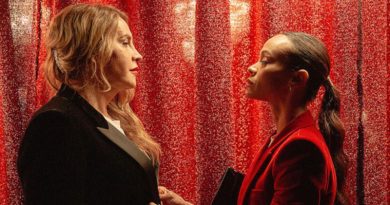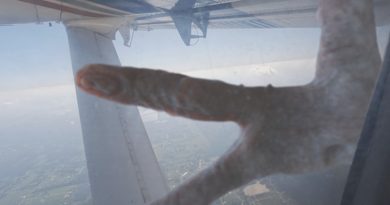The Demon Disorder (2024) Review: Steven Boyle’s Directorial Debut Evokes the Early Cronenbergian Body-Horror Tropes
The Demon Disorder marks the directorial debut of Steven Boyle, the makeup and special effects veteran behind genre movies like Undead, Daybreakers and Bait. He even worked in some of the biggest movies from Star Wars: Episode II – Attack of the Clones to The Matrix Revolutions, King Kong and The Hobbit: An Unexpected Journey. Boyle made good use of his decades-long experience in the effects department in his first feature film, blending the demonic possession tropes with the icky body-horror elements of the early David Cronenberg works in the ’70s and ’80s.
The movie follows three estranged brothers Jake (Dirk Hunter), Phillip (Charles Cottier) and Graham (Christian Willis), who watched their father (John Noble) die under mysterious circumstances. His death has something to do with the unexplained disease and possession, causing him to deteriorate both mentally and physically. The brothers have since moved on but not without the trauma forever scarred in their minds. While Jake and Phillip remain on the family farm, Graham chooses to leave his childhood home. He lives and works in a garage, taking a young girl named Cole (Tobie Webster) under his wing.
Then one day, Jake shows up looking drunk in Graham’s garage and wants him to return home. The former shows him the footage captured in his phone about their younger brother Phillip being possessed by their supposedly deceased father, forcing them both and especially Graham to confront the dark past.
The Demon Disorder benefits from the sibling dynamics between Dirk Hunter’s Jake, Christian Willis’ Graham and Charles Cottier’s Phillip, all of which deliver equally decent performances. Kudos also go to John Noble’s supporting role for playing the ill-fated father who died from a mysterious disease. Steven Boyle, who also co-wrote the screenplay with Toby Osborne, doesn’t offer anything new in their story. It’s pretty much familiar stuff about the characters dealing with their trauma as the past catches up on them. The occasional scenes from flashbacks to present-day moments now and then are meant to address the grief of the three brothers forced to endure. But the attempted emotional depth and tension are more perfunctory than fully committed to it.
Boyle is more comfortable when comes to fulfilling the technicality of the part possession and part body-horror tropes. Horror fans can look forward to his extensive use of practical effects as we see some of the characters’ bodies infested by otherworldly, ugly-looking parasites in the form of slugs digging out of the nasty bite wounds. And I mean, nasty as in the capital “N”. The effects are undeniably grotesque as they should be and credits go to Boyle and his team for giving us the old-school feel of how a horror movie with a distinctly B-movie vibe. He certainly doesn’t hold back on the gory details, particularly in the third act, even though it’s a pity that he has to work on a limited budget.
Speaking of the limitation, the budget also extends to shooting the movie only in a few locations with the majority of it taking place in the derelict farmhouse. But Boyle manages to sustain some claustrophobic tension and a sense of menacing, yet visceral dread with the help of Terry King’s atmospheric cinematography and Peter Spierig’s ominous score.
Shame about the unexpectedly abrupt ending, though after the promising third act while leaving more questions than answers. The movie even ends with a mid-credits scene, suggesting an open ending. If there’s a sequel to be made one day, I hope Steven Boyle is given a substantial budget to work on it.
The Demon Disorder is currently streaming on Shudder.





